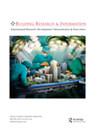纪念性建筑的无损检测空间数据集成:塞维利亚皇家城堡的技术信息管理
IF 3.7
3区 工程技术
Q1 CONSTRUCTION & BUILDING TECHNOLOGY
引用次数: 0
摘要
用于遗产建筑诊断的无损检测(NDT)已被证明是预防性保护领域中最可持续的方法之一。然而,无损检测信息的综合管理是复杂的,经常导致数据的优化使用不力。该贡献旨在提出一种方法,以标准化的方式将无损检测数据集成到使用地理信息系统(GIS)生成的简化数字信息模型中。这种方法被应用于少女院的石膏作品,这些作品在塞维利亚皇家阿尔卡扎(西班牙)具有巨大的历史艺术价值,这是联合国教科文组织的一座重要纪念碑。为此,一个基于多尺度web GIS的模型集成了来自抹灰厂的无损检测信息,如环境条件、损伤图、C海岸硬度、表面湿度、红外热像仪(IRT)、数字图像处理(DIP)和探地雷达(GPR)。对各种测量数据的地理参考及其同时可视化,使得能够检测综合体中的脆弱区域。管理人员很容易获得这些结果,此外还显示了研究方法的分析潜力,从而可以快速诊断和分级任务。本文章由计算机程序翻译,如有差异,请以英文原文为准。
NDT spatial data integration for monumental buildings: technical information management for the Royal Alcazar of Seville
ABSTRACT Non-destructive testing (NDT) for the diagnosis of heritage buildings has proved to be one of the most sustainable approaches in the field of preventive conservation. Nevertheless, the comprehensive management of NDT information is complex, often resulting in a poorly optimized use of the data. This contribution aims to propose a method for integrating NDT data in a standardized way into simplified digital information models, produced using Geographic Information Systems (GIS). This method is applied to the plasterwork located in the Courtyard of the Maidens, which are elements with an enormous historic-artistic value in the Royal Alcazar of Seville (Spain), a significant UNESCO monument. For this purpose, a multi-scale web GIS-based model has integrated the NDT information from the plasterworks, such as ambient conditions, damage mapping, C-Shore Hardness, Superficial Humidity, Infrared thermography (IRT), Digital Image Processing (DIP) and Ground Penetration Radar (GPR). The combined georeferencing of the data from the various measurements and their simultaneous visualization has enabled the detection of vulnerable areas in the complex. The results are easily accessible for managers, and additionally show the analytical potential of the research approach, thereby allowing a quick diagnosis and hierarchization of tasks.
求助全文
通过发布文献求助,成功后即可免费获取论文全文。
去求助
来源期刊

Building Research and Information
工程技术-结构与建筑技术
CiteScore
8.60
自引率
7.70%
发文量
43
审稿时长
>12 weeks
期刊介绍:
BUILDING RESEARCH & INFORMATION (BRI) is a leading international refereed journal focussed on buildings and their supporting systems. Unique to BRI is a focus on a holistic, transdisciplinary approach to buildings and the complexity of issues involving the built environment with other systems over the course of their life: planning, briefing, design, construction, occupation and use, property exchange and evaluation, maintenance, alteration and end of life. Published articles provide conceptual and evidence-based approaches which reflect the complexity and linkages between cultural, environmental, economic, social, organisational, quality of life, health, well-being, design and engineering of the built environment.
 求助内容:
求助内容: 应助结果提醒方式:
应助结果提醒方式:


